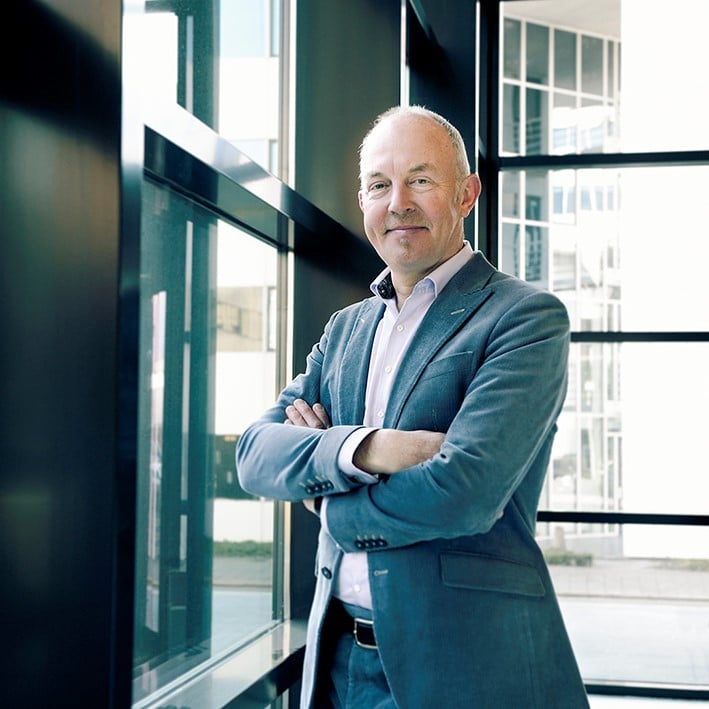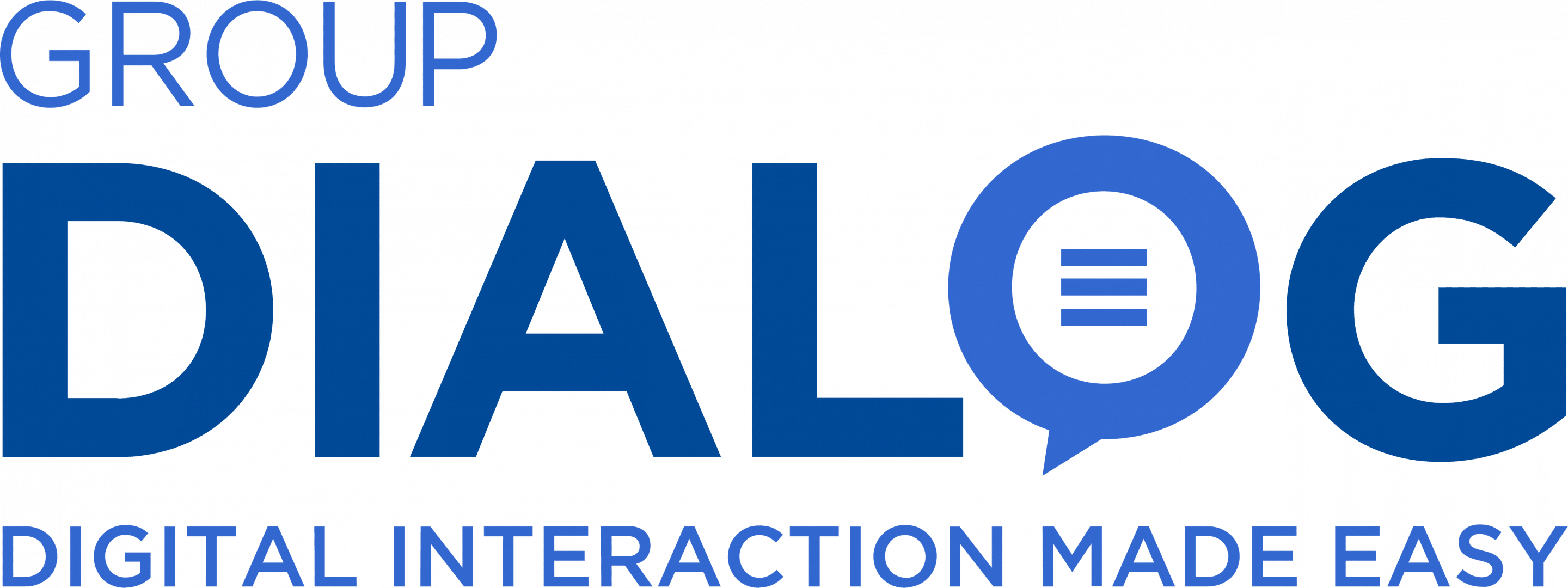Interview Hen Snackers
”That’s mental accessibility, the ability to listen carefully to your customers”
It is almost cliché to say that everything happens almost digitally these days. But the fact that all communication and interaction also happens smoothly and silently is something of a completely different order. What do you mean by customer interaction? “For me, these are all contact moments with a customer. In any way. Controlled, planned and spontaneous. Approached from one person or a group. So also the people on the work floor who enter organisations. And even more important: `as easy and personal as possible.
“Today’s customers expect organisations to include digital capabilities in their service offerings. In fact, they expect digital self-service, and therefore in the most efficient and easy way, without barriers. But to what extent do we take sufficient account of this in our customer communications? Dialog Groep discussed this question with Mr. Hen Snackers, former CEO of QNH. Today, Hen is an investor with several participations in (IT) companies and owner of his own consultancy firm Löss Consulting around Digital Business issues.”
Easy and personal
Snackers sees that digital customer interaction often lacks the easiest and most personal way to interact with customers. He indicates that by using and having much more data, it should be more personal. The rule here is: you have all the data at your disposal, but what do you do with it in concrete terms? How can you ensure that you continue to add value for your customers?
What is he thinking about at Digital Interaction Made Easy? The motto of Dialog Groep. “At ‘Digital Interaction Made Easy’, I think mainly of ‘Made Easy’… so that the logic is OK, that you have a simple tile to click on and don’t have to go through all the difficult steps or read a lot of text”.
Despite the fact that we in the Netherlands think that we have already come a long way when it comes to smooth customer interaction, he thinks differently. “I think we overestimate ourselves in the Netherlands. Take Spain, for example. Getting connected to the power grid or getting a new subscription with a power supplier are much more flexible to realize there. They may not yet speak the English language perfectly, but they are early adaptors”. Too often he sees a focus in the Netherlands on winning new customers instead of customer retention. For example, by using giveaways. “I’m not waiting for a bar of chocolate, I prefer to be helped well or to be able to arrange things well and easily myself. That loyalty needs to be rewarded. That is always cheaper in the end”.
Mental readiness
Nevertheless, Snackers also sees positive examples of organisations that are fully committed to smooth customer interaction. Passing on the meter readings for water or electricity is very easy these days. With a few presses of a button. But think also of Transavia vs. Ryanair. The price difference between the two is significant, which makes it easy to choose Ryanair. Still, the Dutch consumer’s empathy with Transavia is better, while Ryanair reflects on something somewhere in Pakistan. The whole customer experience at Transavia makes me prefer to pay a little more and fly with Transavia.”
“But it starts with all organisations with mental readiness. The will to transform into a service-driven organisation. According to Snackers, the crucial success factor is ‘mental accessibility’: the ability to listen attentively, both to customers and to employees.”
You can’t go from the basement to the attic
Why is it so difficult for companies to improve customer interaction? With QNH, Snackers has gained a lot of experience with large (enterprise) organisations. To what extent are companies driven by Compliancy & Security officers and/or processes?
“There are still many traditional decision makers. As a result, you see less adoption of innovation. They are often busier with the shareholders. The new generation that will form boards of directors will probably give more priority to this. But even now you can really see that clients are important and are on the agenda of board meetings. But they are linked to money flows. It has a major impact on IT (budget). But IT is really willing. It’s more up to the executive board and the choices and increasing awareness. The fear with ‘The Business’ of letting go of customer contact also plays a role. Small steps are needed to break through this. You can’t go from the basement to the attic”.
What tips do you have for CIOs, CMOs and CEOs?
“Don’t look up to directors. They also think operationally and they are also customers somewhere. But for them, plans and ambitions do need to be translated into financial flows. ‘How do I achieve targets’ is the most important question. Take ING versus Achmea, for example. ING is further and faster than Achmea. Vision and guts seem to be decisive in this. They quickly decided to close branches and take a different course. Even though this meant an investment of billions”.
Hen Snackers
Löss Consulting

Photo caption: Hen Snackers
The fact that everything is happening almost digitally nowadays is almost cliché. But the fact that all communication and interaction is also smooth and silent is something of a completely different order. What do you mean by customer interaction? ”For me, these are all touching moments with a customer. One way or the other. Controlled, planned and spontaneous. Approached from one person or a group. So do the people in the workplace who come in to organizations. And more importantly; ‘as easy and personal as possible.”
Easy and personal
Snackers sees that digital customer interaction is still lacking in as easy and personal as possible. He indicates that by using and having much more data it should be more personal. ”This applies: you have all the data at your disposal but what do you do in concrete terms with it? How can you keep adding value to your customers?”
What he’s thinking about at Digital Interaction Made Easy? The motto of Dialog Group.
”At ‘Digital Interaction Made Easy’ I think of ‘Made Easy’… so that the logic is okay, that you have a simple tile that you click on and don’t have to go through all the difficult steps or read a lot of text.
Although we in the Netherlands think that we are already very far when it comes to smooth customer interaction, he thinks otherwise. ”I think we overestimate ourselves in the Netherlands. Take Spain, for example. The power connections are much smoother to achieve. They may not speak the English language perfectly yet, but they are early adaptors. In the Netherlands, he too often sees a focus on winning new customers instead of customer retention. For example, by using giveaways. ”I’m not waiting for a bar of chocolate, I prefer that I get well helped or can arrange things well and easily myself. That loyalty must be rewarded. In the end, it’s always cheaper.
Mental readiness
Nevertheless, Snackers also sees positive examples of organizations that are fully committed to smooth customer interaction. ”Passing on the meter readings is very easy nowadays. With a few pushes of the button. But think of Transavia vs. Ryanair. The price difference between the two is large and so you are quickly tempted to opt for Ryanair. Nevertheless, the empathy for the Dutch consumer at Transavia is better, while Ryanair is coming up with something somewhere in Pakistan. The whole customer experience at Transavia makes me prefer to pay a little more and fly with Transavia.
But it starts with all organizations with spiritual readiness. The will to transform into a service-driven organization. According to Snackers, the crucial success factor is ‘spiritual accessibility’: the ability to listen carefully. To customers and to employees.
You can’t go from the basement to the attic.
Why is it so difficult for companies to improve customer interaction? With QNH Snackers has gained a lot of experience with large (enterprise) organizations. To what extent are companies controlled by Compliancy & Security officers/processes? ”There are still many traditional decision makers. As a result, you see less adoption of innovation. They are often busier with the shareholders. The new generation that will form managements is probably giving more priority to this. But even now you can see that customers are important and are on the agenda of board meetings. But it’s linked to money flows. It has a lot of impact on IT (budget). But IT is really willing. It’s more up to the chief executive and the choices and awareness. Business’s fear of letting go of customer contact also plays a role. Small steps are needed to break this. You can’t go from the basement to the attic.
Don’t look up to directors
What tips do you have for CIOs, CMO’s and CEOs? “Don’t look up to directors. They also think operationally and are often customers somewhere. But for them, plans and ambitions have to be translated into money flows. How do I meet targets is the most important question? For example, look at ING versus Achmea. ING is further and faster than Achmea. Vision and guts seem decisive in this. They quickly decided to close offices and take a different course. Even if this meant a billion-dollar investment.
Photo caption: Hen Snackers
Read more about our vision on digital customer communication here.
WANT TO READ MORE?
Find the right balance between efficiency, accessibility, and human contact in your channel strategy
A successful channel strategy requires a balance between efficiency, accessibility, and human contact. Excessive channel steering can lead to customer frustration and loss, while listening to customer needs and providing diverse channels enhances customer satisfaction and creates a positive brand experience.
The importance of the right Channel Strategy to best serve customers
A well thought out and effective channel strategy can make the difference between satisfied customers and customers going to competitors. Let's look at the importance of a proper channel strategy in serving your customers in the best way possible.
Aspire CEO Kaspar Roos on improving customer experience, managing digital transformation and the future of artificial intelligence
Kaspar is the CEO and founder of Aspire, a consulting firm specializing in Customer Communications Management and Customer Experience Management. Dialog Group and Kaspar have the same mission: to help companies with their digital transformation to improve the customer experience company-wide.



